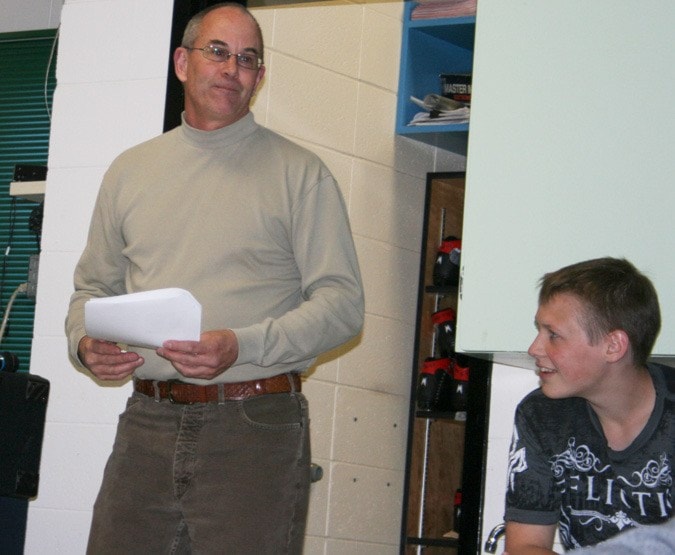The forest is a huge part of nature. Its survival affects the environment in a big way. An invitation by Vermilion Forks School to Weyerhaeuser Princeton to come and speak to the students about habitat was met with a big yes by the corporation. On Thursday, three employees of Weyerhaeuser were at VFE with an important message.
Planner Kevin Hargrave and Logging Supervisors Pete McDonald and Nick Kleyn all came to the school to talk about life in the forest. They started at the beginning explaining what habitat means. “Habitat is a place to obtain food, water, shelter and space,” stated McDonald. “Habitat is the interaction of vegetation, animals, microorganisms and the physical environment.”
McDonald talked about plants, mammals, birds, insects and reptiles and amphibians and he talked about the three main types of habitat; grasslands, wetlands and forests. Using examples of local plants and animals, the students were given an outline of a local habitat. He talked about the community created through the interaction whether direct or indirect of different species of living things. The impact of natural disturbances such as fire, flooding and wind storms on the environment versus the impact of construction development and the infrastructure that heavily alters habitat of an area with roads, buildings and forest harvesting. McDonald also discussed the impact recreation and agriculture can have on the environment.
The sessions with the students were meant not just to educate them on the natural world around them, but to make them think about the consequences of their actions when they are out enjoying nature. They were drawn into the world of the beaver and how a beaver can significantly impact the area they dam up with their trees which encourages some types of habitat and displaces others. The dams can create better pools for fish, clearings for sunlight to penetrate the forest floor and an area more conducive to riparian settlement. However, it can displace other species of living things. Trees may die as the water level rises higher. Flooding can occur. The Weyerhaeuser presentation ended with a look at how human disturbances can adversely affect the environment. The students were shown local forested areas where vehicle tracks had damaged the possibility of vegetation growth. Vehicles pack down the soil and push out the soil’s oxygen,” said McDonald. “When there is no oxygen in the soil, vegetation can’t grow there. Sometimes this can impact an area for over a hundred years.”
“You need to really understand what you are doing out in the forest,” concluded McDonald. “Make sure you bring out what you take in. Leave the environment how you would like it to be when you arrive. We all impact the forest, animals and humans. We need to be careful not to destroy it.”
